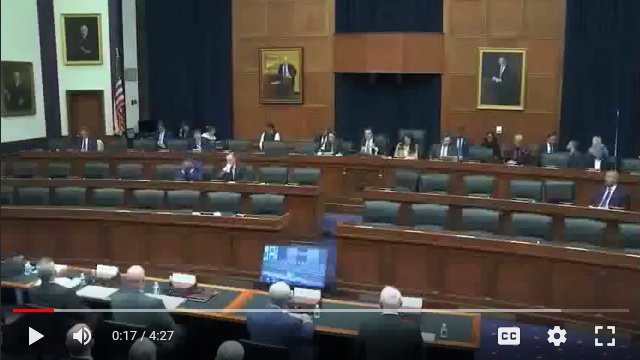Aurora Airport (KUAO) sits on the north edge of Marion County, 22-miles south of Oregon’s busiest commercial airport, Portland International (KPDX). In late 2021, a new airport master plan process was initiated: FAA put up more than $1 million, airport-sponsor Oregon Department of Aviation (ODA) inked a contract, the main contractor, an outfit known as ‘Century West’ began crafting all the technical reports, and another outfit known as ‘JLA’ took on managing a 2-year public engagement process. Now, it has stretched out to a 4+year process, burning out earlier concerned citizens who just could not endure this slow-motion special-interest landslide.
The objective of all of this waste: to finalize documents supporting the intended outcome…. a lengthening and strengthening of the KUAO runway, to serve mostly uber-elite charter flights often with one paying passenger, using larger and thirstier jets. Underlying this is simple money and greed; a few entities on and adjacent to the airport will make more money on hangar rentals and fuel sales, and ODA stands to double or triple annual revenues from those fuel sales (they typically collect 8cts per gallon of fuel, and could net $600+ from one fueling of the larger private jets they want to attract to KUAO).
The current KUAO Airport Master Plan is an excellent example of the gross inequities between the few who benefit from airport expansion and the many who are impacted in surrouding communities. It mirrors similar failures at KBED, KAPA, KBJC, KTKI, and so many other GA airports nearly 50 years past their peak.
The Overall Trend
In the last few decades, while General Aviation (GA) has been declining to a fraction of the peak operational levels of around 1979-1980, there has been one dominant area of expansion: private and charter jets based at GA airports. It has become a very common phenomenon to see declining GA airports retool, with the following game-plan:
- tear down older T-hangars and other aircraft parking structures and, build larger, climate-controlled box hangars;
- infill undeveloped airport lands with even more corporate box hangars, for housing jets that burn 100 to 500+ fuel gallons per hour;
- spend millions in nearly free FAA AIP grant monies to lengthen runways and add taxiways, to serve heavier jets;
- aggressively market to the wealthiest set, to bring their private/personal jet to be based at the airport;
- use even more federal grant monies to ‘secure’ the oversized airport acreage with perimeter fencing (ostensibly to stop airport terrorist activities, but more importantly, to insulate the airport users from the 99.9% who are OUTSIDE the airport, by concealing on-airport activities from public view);
- accommodate a tiny few (usually one or two) airport operators, who want to make money catering to the elite jet owners who base at the airport, selling fuel, maintenance, pilot services, ‘customer satisfaction’ services, and management services (such as leasing out the personal jet for expensive air charter work); and,
- ‘upgrade’ the airport name to include the word ‘Executive’. Ah, such brilliant marketing (…but, to hell with impacted citizens).
The net result is what used to be a LOCAL airport serving pilots living in the local community, becomes an invading occupying force, serving outside interests and ‘regulated’ (is that really a fair word?) by the captured regulatory agency FAA… from far-away FAA regional offices and from Washington, DC. Gee, what could go wrong?
And, one more serious problem with this trend toward personal and charter jets: the long-term impact accelerates Climate Change. When it comes to outsized personal carbon footprints, private jet flying is the fastest way for a person to burn fossil fuels… an hour of such flying can exceed a year of fuel for a personal car. Private jet trips, mostly for vacations or to jaunt out to a distant game or do some shopping because ‘…why not?…I can afford it…’, this kind of mindless flying hyperconsumption is the worst of the worst within aviation.
What Can You Do About It?
Show up. Ask questions. Speak up about what you do not want to happen at your local airport. Advocate for future generations, and for a viable climate future.
Airport Master Plan processes happen. They are strongly dominated by aviation interests, and designed to be controlled by the aviation players (FAA, the airport sponsor and the contractors). But, the impacted side needs to attend, too. The next KUAO event is an Open House by ODAV, at North Marion High School, 4-7pm on June 13th. For more info, see the webpage by City of Wilsonville.
Just show up. That’s how we make the democratic process work.
And, to help you learn more, click here to open/download the oldest Aurora Airport Master Plan, from 1976 (36Mb PDF). It is very well written. From a long, long time ago in Oregon: Tom McCall, implementation of land-use regs and the bottle bill, Ken Kesey, and an early (and almost admirable) version of Nike and Bill Knight. A time when we Oregonians were hugely proud of our unspoiled state, and of our best reputation for environmental commitment. Yup, long ago….
In an aviation context, this Master Plan came before all the spin and games began, when officials actually tried to serve more and deceive less; plus, this one was published right when GA was peaking (in no small part due to student-pilot training subsidies via the GI Bill). It is a fascinating read. The file is large and the download slow, but check it out!



